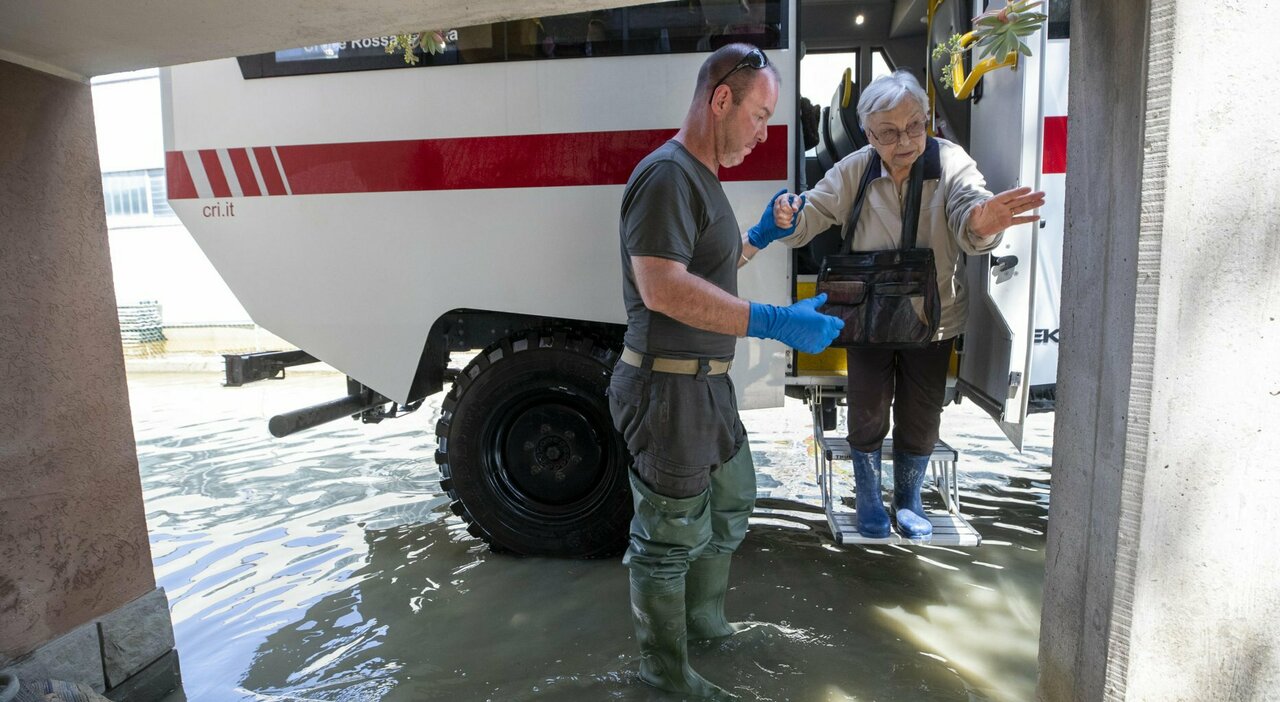The recommendations on the use of FFP2 masks and also the vaccinations. But this time against the tetanus, diphtheria, the possible ones infections deriving fromcontaminated water, which stagnates and mixes with organisms dangerous to human health or with chemical substances. TO council, in the province of Ravenna, and in the other municipalities and hamlets affected by the floods in Romagna, the water that does not flow is posing a health problem. The debris, the waste accumulated in recent days, raises the issue of the health emergency to the point that specialized campers have arrived from Bologna to Conselice, Lugo, Faenza, Ravenna and Cervia to vaccinate the population against tetanus. Furthermore, in Conselice, the mayor Paola Pula, has signed an ordinance which requires citizens of still flooded areas to leave their homes for health and hygiene reasons. The fear is that stagnant and therefore contaminated waters could be potential basins of infections.
Today in a few hours in Conselice and Solarolo 635 people showed up to receive the extraordinary vaccination against tetanus. Another day of extraordinary vaccination is scheduled for tomorrow Sant’Agata sul Santerno.
Conselice, where the city in Emilia-Romagna affected by the flood and the health emergency is located
Conselice, infection alert
Why does this problem even arise now? Floodwaters can be contaminated by wastewater from sewage systems or by chemicals and agricultural or industrial wastes with possible health impacts.
But what are the potential dangers? Tetanus is a disease that you risk contracting. Therefore the Romagna health authority is trying to do prevention and has recommended that residents check that they have a valid tetanus vaccination (the last booster dose within the last 10 years).
There is a danger of contracting gastrointestinal infections. When floods impact the sewage system and wastewater, there is an increased risk of contracting infections which manifest in vomiting and diarrhoea. Remember not to touch your eyes, nose and mouth with muddy hands and whenever possible wash with soap and water.
Running water may not be drinkable. In flooded areas it is strictly recommended to follow the instructions of the municipality of residence to make sure you can use the water for drinking or cooking.
Molds and spores: as the days go by, water and humidity can give rise to mold and spores that are dangerous to health. In these cases it is necessary to ventilate the areas of the house affected by the flood as much as possible, to favor the drying of walls and floors and it is important, underline the health authorities of Romagna, to maintain correct ventilation even during cleaning activities and remember to protect whenever possible, isolating any uncontaminated areas from the spread of dust, mold and spores. In the event of close contact with surfaces covered in mould, it is useful to cover the nose and mouth with a cloth or mask, preferably FFP2.
Conselice, the race to save the ghost town: dewatering pumps, barges, bulldozers and sandbags
Conselice, evacuation from flooded houses due to health risks. “Knee-deep in water and dead rats.” Vaccination chaos
The tiger mosquito
The heat and stagnant water also raises the danger of the spread of the tiger mosquito: a problem that arises every year in these flat areas (which were once marshy). The flood has created an ideal environment for laying eggs and allowing the larvae to hatch.
There is a risk that the transmission of viruses carried by these insects will increasepoints out Francesco Brcolo, professor of clinical microbiology at the University of Salento and member of the scientific committee of the Italian Society of Environmental Medicine.
The tiger mosquito (Aedes albopictus) is in fact a vector of dangerous viruses, such as Chikungunya, Dengue, Zika, which have also circulated in Emilia-Romagna in the past years, while the common mosquitoes of the genus Culex can be carriers of the West Nile fever virus. For this reason, the expert observes, “it is important to monitor the number of mosquito eggs, especially the tiger mosquito”.
It is possible to do this «with egg traps or by analyzing water samples. Both are indirect surveillance methods to assess the epidemic risk threshold of emerging viruses. On the other hand, observes Broccolo, the Chikungunya, Dengue and Zika viruses «are no longer just tropical». «On the basis of the number of eggs identified with random sampling, it is possible to establish, with the same number of larvae detected, the rate of diffusion of the real disease along a scale that goes from R0 lower than 1, i.e. no risk, to R0 higher than 5 , very high”.
It is calculated that the latter corresponds, for all three viruses, to a quantity of eggs greater than a thousand. “In the meantime – concludes Broccolo – it is useful to defend yourself from mosquito bites using repellents and treatments with larvicides”.
At the moment however, the risk of malaria is not foreseenwhose plasmodium vector is not present or in any case very rare in our country as the Anopheles mosquito prefers clean waters.
© breaking latest news
